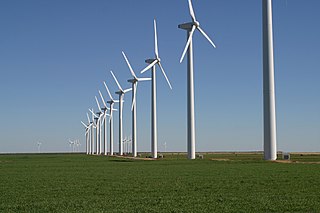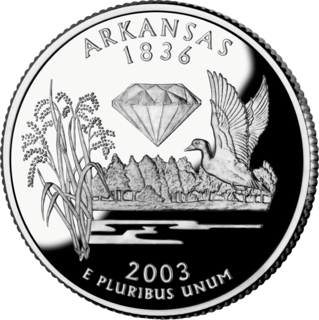
Lyons is a city in Burt County, Nebraska, United States. The population was 851 in the 2010 census. The city is named after its founder.

The Rural Business-Cooperative Service is one of three agencies within USDA Rural Development responsible for administering various economic development programs to rural communities in the United States and its territories. Because these three agencies are closely aligned, they are commonly referred to as the USDA Rural Development, Business & Cooperative Programs.

Rural electrification is the process of bringing electrical power to rural and remote areas. Rural communities are suffering from colossal market failures as the national grids fall short of their demand for electricity. As of 2017, over 1 billion people worldwide lack household electric power – 14% of the global population. Electrification typically begins in cities and towns and gradually extends to rural areas, however, this process often runs into obstacles in developing nations. Expanding the national grid is expensive and countries consistently lack the capital to grow their current infrastructure. Additionally, amortizing capital costs to reduce the unit cost of each hook-up is harder to do in lightly populated areas. If countries are able to overcome these obstacles and reach nationwide electrification, rural communities will be able to reap considerable amounts of economic and social development.
The Deutsche Gesellschaft für Internationale Zusammenarbeit (GIZ) GmbH, often shortened to simply GIZ, is a German development agency headquartered in Bonn and Eschborn that provides services in the field of international development cooperation and international education work. GIZ's main commissioning party is Germany's Federal Ministry for Economic Cooperation and Development (BMZ). Other commissioners include European Union institutions, the United Nations, the private sector, and governments of other countries. In its projects GIZ works with partners in national governments, actors from the private sector, civil society and research institutions. It is the organization's self-declared goal to deliver effective solutions that offer people better prospects and sustainably improve their living conditions.

The Environmental Law and Policy Center (ELPC) is a Midwest-based non-profit environmental advocacy group, with offices in Chicago, Columbus (OH), Des Moines (IA), Duluth (MN), Jamestown (ND), Madison (WI), Sioux Falls (SD), and Washington, D.C. ELPC's mission is to advance environmental progress and economic development together throughout the Midwest through projects that advance clean energy, clean air, clean water and clean transportation.
Rural community development encompasses a range of approaches and activities that aim to improve the welfare and livelihoods of people living in rural areas. As a branch of community development, these approaches pay attention to social issues particularly community organizing. This is in contrast to other forms of rural development that focus on public works and technology.

A wave farm – or wave power farm or wave energy park – is a collection of machines in the same location and used for the generation of wave power electricity. Wave farms can be either offshore or nearshore, with the former the most promising for the production of large quantities of electricity for the grid. The first wave farm was constructed in Portugal, the Aguçadoura Wave Farm, consisting of three Pelamis machines. The world's largest is planned for Scotland.

Wind power in the United States is a branch of the energy industry that has expanded quickly over the latest several years. From January through December 2020, 337.5 terawatt-hours were generated by wind power, or 8.42% of all generated electrical energy in the United States. In 2019, wind power surpassed hydroelectric power as the largest renewable energy source generated in the U.S.

The Food, Conservation, and Energy Act of 2008 was a $288 billion, five-year agricultural policy bill that was passed into law by the United States Congress on June 18, 2008. The bill was a continuation of the 2002 Farm Bill. It continues the United States' long history of agricultural subsidies as well as pursuing areas such as energy, conservation, nutrition, and rural development. Some specific initiatives in the bill include increases in Food Stamp benefits, increased support for the production of cellulosic ethanol, and money for the research of pests, diseases and other agricultural problems.
The Environmental and Energy Study Institute(EESI) is an independent, bi-partisan 501(c)(3) non-profit organization that aims to promote environmentally sustainable societies. Based out of Washington, DC, EESI seeks to be a catalyst moving society away from environmentally damaging fossil fuels and toward a clean energy future. The organization was established in 1984 by a bipartisan and bicameral group of members of the United States Congress who were concerned with global environmental and energy problems.

Native American tribes in the U.S. state of Nebraska have been Plains Indians, descendants of succeeding cultures of indigenous peoples who have occupied the area for thousands of years. More than 15 historic tribes have been identified as having lived in, hunted in, or otherwise occupied territory within the current state boundaries.
The Great Valley Center is a nonprofit organization that supports activities and organizations benefiting the economic, social, and environmental well-being of California's Central Valley. The Great Valley Center operates leadership development programs, organizes conferences and regional events, and provides information and data to the public, nonprofits, policymakers and businesses. The organization has been described as a regional public-policy think tank.
The Omaha Reservation of the federally recognized Omaha tribe is located mostly in Thurston County, Nebraska, with sections in neighboring Cuming and Burt counties, in addition to Monona County in Iowa. As of the 2000 federal census, the reservation population was 5,194. The tribal seat of government is in Macy. The villages of Rosalie, Pender and Walthill are located within reservation boundaries, as is the northernmost part of Bancroft. Due to land sales in the area since the reservation was established, Pender has disputed tribal jurisdiction over it, to which the Supreme Court ruled unanimously in 2016 that "the disputed land is within the reservation’s boundaries."
The Harvard Project on American Indian Economic Development was founded in 1987 at the John F. Kennedy School of Government, Harvard University. It administers tribal awards programs as well as providing support for students and conducting research. The Harvard Project aims to understand and foster the conditions under which sustained, self-determined social and economic development is achieved among American Indian nations through applied research and service.

The economy of Arkansas produced US$119 billion of gross domestic product in 2015. Six Fortune 500 companies are based in Arkansas, including the world's #1 corporation by revenue, Walmart. Arkansas's per capita income for 2010 was $36,027. The three-year median household income from 2009-11 was $39,806, ranking forty-ninth in the nation.

Wind Powering America (WPA) is an initiative of the United States Department of Energy (DOE) that seeks to increase the use of wind energy throughout the United States. WPA collaborates with key state and regional stakeholders, including farmers, ranchers, Native Americans, rural electric cooperatives, consumer-owned utilities, and schools to break down barriers associated with wind energy development.









